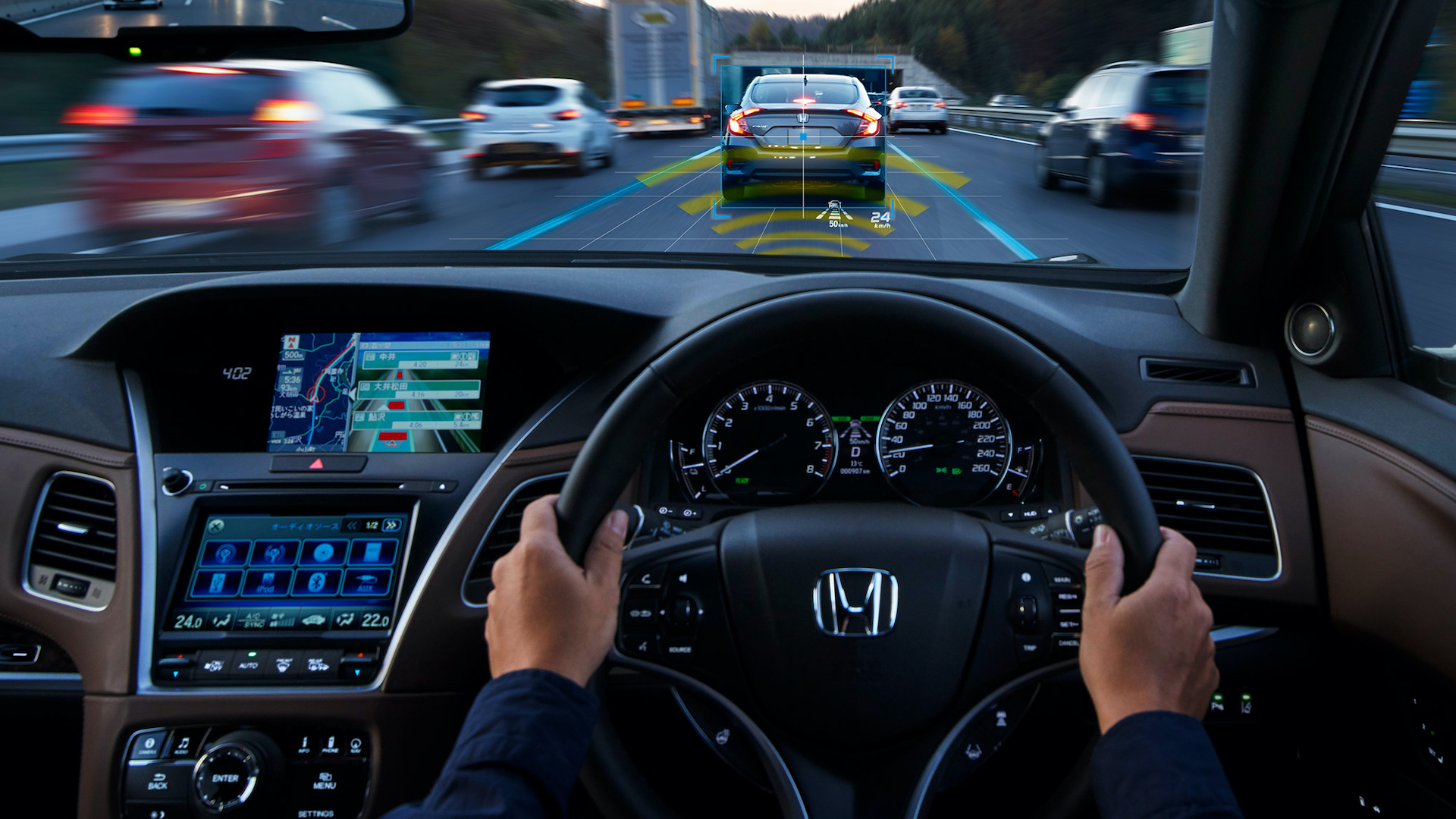

Carmakers have strived for the SAE’s third tier of vehicular autonomy for years, but none had achieved it yet. Not Tesla, not Cadillac and not Audi, which pledged its new A8 flagship would be Level 3-capable before eventually backing down on its promise. Yet out of the blue came Honda with an enhanced version of its Honda Sensing advanced driver-assistance system (ADAS) called Honda Sensing Elite, which will become the first commercially available SAE Level 3 system in Honda’s domestic-market Legend sedan.
SAE Level 3 crucially differs from Level 2 in that it’s a graduation from partial automation—like in Tesla’s Autopilot—to conditional automation, which means a car can read its environment and make decisions based on what it sees. This allows a car equipped with a Level 3 system like Honda Sensing Elite to act on its own accord (no pun intended) based on the situation at hand—sometimes with the driver’s hands off the wheel, and in a few cases, with their eyes off the road.

Such freedom is granted under the Honda Sensing Elite’s Traffic Jam Pilot function, which gives the car control over its own brakes, steering and throttle in that eponymous scenario. This lets the car maintain its following distance, speed and lane position. It does all this with zero input from the driver, who Honda says can “watch television/DVD on the navigation screen or operate the navigation system to search for a destination address.”
Outside of traffic jams, Honda Sensing Elite functions like the best ADAS technology currently offered from its electric vehicle partner GM, Cadillac’s newly updated Super Cruise. With Adaptive Cruise Control, Lane Keeping Assist and Low-Speed Follow active on the highway as well as “certain conditions” fulfilled, a Honda Sensing Elite-equipped car can drive behind another vehicle at a preset speed and a safe distance while staying centered in its lane. If the system notices the car ahead is lagging below the set speed, “the system notifies the driver and then assists [with] passing and returning to the original lane.” First, the system makes sure it’s safe to change lanes, and if it is, a simple flick of the turn signal will trigger a safe pass of the vehicle ahead.

If the system cues the driver to reassume control through auditory, haptic and visual alerts, but the driver doesn’t reengage with the controls because they’re busy stunting for TikTok, Emergency Stop Assist will activate. This will guide the car to a safe stop on the shoulder. If there is no shoulder, the vehicle will creep to a halt with its hazards flashing and horn blaring. As Honda emphasized in its release announcing Honda Sensing Elite, it takes abuse of its automated driving systems more seriously than the company that started the craze in the first place.
“There is a limit to the capabilities (e.g. recognition capability and control capability) of individual functions of Honda Sensing Elite,” reads an official statement. “Please do not overestimate the capabilities of each Honda Sensing Elite function and drive safely while paying constant attention to your surroundings. Please remain in condition where you can respond to the handover request issued by the system, and immediately resume driving upon the handover request.”
Honda claims Sensing Elite was tested in 10 million unique simulated scenarios and 800,000 miles of real-world testing before it decided the tech was ready for primetime, albeit on a limited edition of its Japan-only Honda Legend sedan. If the Legend looks familiar, it’s because we got it as the Acura RLX until it was discontinued here last year. Just 100 cars will be made available with the technology in Japan, and they will cost the equivalent of $101,900. None of these Legends will make their way to the U.S., and with vehicular autonomy partially regulated at the individual state level, it will still be a while before you can binge Netflix in your next-gen Honda Civic Type R.
Got a tip or question for the author? You can reach them here: james@thedrive.com